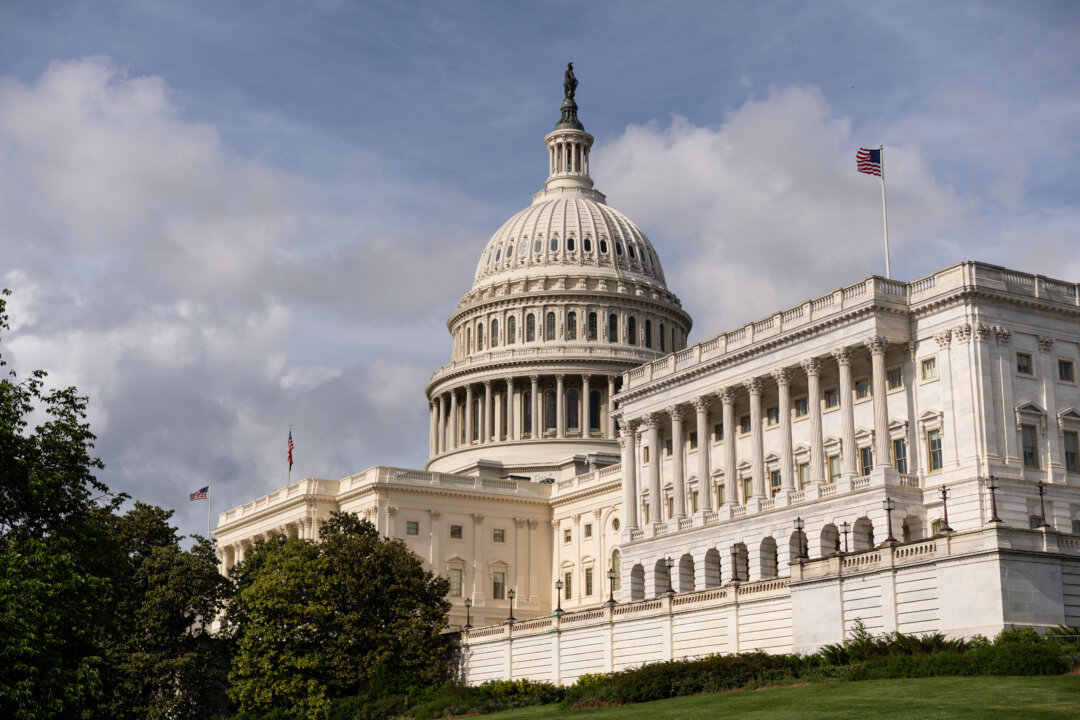The tax bill includes Trump’s campaign promises such as no tax on tips and overtime. It also increases the state and local tax deduction cap to $30,000.
The House Ways and Means Committee, which manages taxes, released the full 389-page text of the long-awaited multi-trillion-dollar Republican tax plan on May 12.
The legislation, which President Donald Trump called “the one big beautiful bill,” proposes lowering taxes by more than $4 trillion and cutting spending by $1.5 trillion over a decade. It would also raise the federal government’s borrowing limit to $4 trillion.
“Ways and Means Republicans have spent two years preparing for this moment, and we will deliver for the American people,” committee chair Jason Smith (R-Mo.) said in a statement. “Pro-family, pro-worker tax provisions are the heart of President Trump’s economic agenda.”
A key aspect of the broader tax agenda is permanently extending the list of lower income tax rates introduced in the 2017 Tax Cuts and Jobs Act.
Although the president and House Speaker Mike Johnson (R-La.) previously considered tax hikes for wealthy Americans, the text does not increase the individual income tax rate on affluent earners or introduce a so-called millionaire’s tax. Instead, the bill would permanently keep the 37 percent top rate for individuals intact.
The tax-writing committee’s bill would allow unincorporated businesses to deduct up to 22 percent of qualified business income, up from 20 percent. Additionally, the estate and gift tax exemption is increased to $15 million and will be indexed to inflation.
Senior administration officials, including Treasury Secretary Scott Bessent, have emphasized the importance of making the 2017 tax law permanent.
“The 2017 Tax Cuts and Jobs Act provided a substantial, non-inflationary impetus to the economy, which resulted in real wage gains on a non-inflationary basis for the American people and a robust economy,” Bessent said at a recent congressional hearing.
Without extending the Trump-era tax cuts, nearly two-thirds of taxpayers could see higher taxes in 2026, economists say.
“If Congress does nothing, most Americans will face higher taxes, worse incentives for work and investment, and a more complicated tax system starting in 2026,” Tax Foundation economists said in a March 2024 report.
Another core component of the bill is that it temporarily increases the Child Tax Credit by $500 and increases the standard deduction by $2,000 for couples to $32,000.
If approved, these changes could take effect this year, allowing U.S. households to receive larger refunds when they file their tax returns next year.
In addition, the tax bill features a paid family and medical leave tax credit that helps businesses offer these plans to their employees.
Republicans would follow through on Trump’s tax pledges, such as eliminating taxes on tips and overtime pay. The bill would also exempt car loan interest payments. These provisions would expire in 2028.
One notable omission was the president’s vow to eliminate taxes on Social Security benefits. However, Rep. Thomas Massie (R-Ky.) has introduced legislation to exempt senior citizens from taxes on Social Security payments.
The GOP tax bill does seek tax relief for seniors, as older Americans could receive $4,000 in “enhanced deductions.”
The legislation also creates Money Account for Growth and Advancement (MAGA) accounts, tax-preferred savings vehicles. The pilot program will begin with $1,000.
Republican lawmakers also aim to increase taxes on the investment income earned by university endowments to as much as 21 percent.
Education Secretary Linda McMahon recently targeted Harvard’s $53 billion endowment, stating that the university “receives billions of dollars of taxpayer largess each year.”
“If Harvard prefers not to change, then Harvard should have no problem using its overflowing endowment to fund its bloated bureaucracy,” McMahon wrote.
The plan also increases the state and local tax deduction cap to $30,000 from $10,000 for couples earning less than $400,000. This has been a thorny issue for moderate Republicans in states such as California and New York, and for conservative GOP lawmakers.
The Ways and Means Committee is scheduled to markup the bill on May 13.
Staying in Suspense
In an interview with Bloomberg’s “Surveillance” program on May 12, the Treasury secretary stated that the tax bill process has exceeded his expectations.
“The tax bill is moving along very well, better than I could have imagined,” Bessent said.
The president’s economic agenda—trade, tax, and regulation—should be completed by the end of the year, he said.
Because Republicans control both chambers of Congress and the White House, lawmakers can pass the president’s package without Democratic support through “reconciliation.” This measure bypasses the Senate filibuster by obtaining a simple majority vote.
However, the legislation could encounter several roadblocks, including Republican lawmakers advocating for a more fiscally conservative bill.
At a May 9 press briefing, White House press secretary Karoline Leavitt said the reconciliation bill would highlight the president’s priorities.
“Anyone who opposes this bill will be opposing the largest tax cut in American history,” Leavitt said.
Budget Surplus in April
The tax plan comes after the federal government registered a $258 billion budget surplus in April, up 23 percent from the same time a year ago.
According to the Monthly Treasury Statement, higher import duty collections and strong tax receipts fueled the better-than-expected budget numbers.
Federal outlays rose about 5 percent, while tax receipts surged approximately 10 percent.
The largest spending items were Social Security ($132 billion), net interest ($89 billion), Medicare ($82 billion), and health ($76 billion).
On May 9, Bessent said in a letter to Congress that the Treasury Department’s extraordinary measures would be exhausted in August, in line with recent estimates of an August or September exhaustion date.








Leave feedback about this